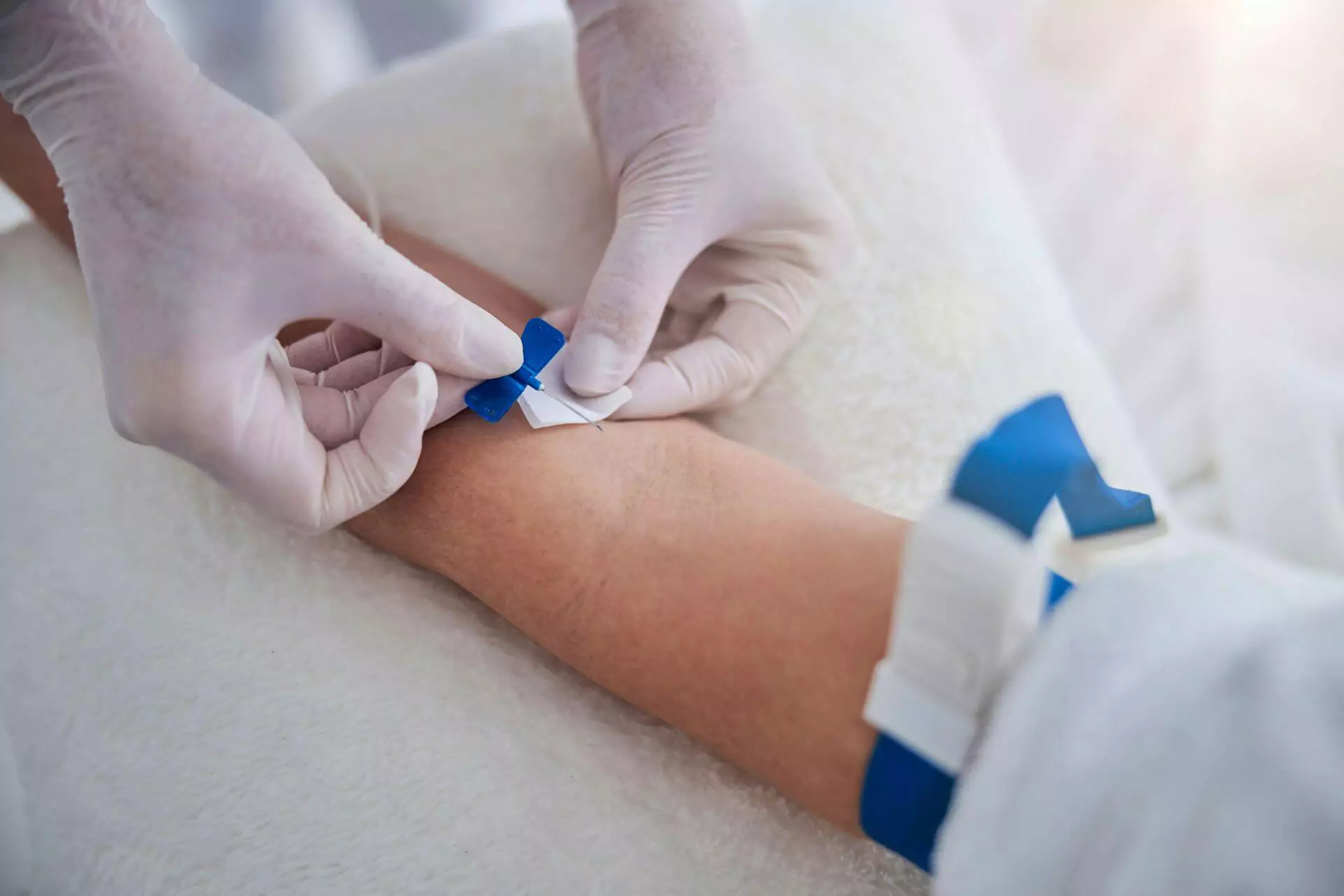What skills do you need to be a medical assistant? Quite a few. Medical assistants play a crucial role in healthcare, balancing administrative tasks with clinical skills.
Medical assistants need to master the following skills:
- How to apply a tourniquet
- Needle assembly
- Venipuncture draws, and
- Capillary draws
But don’t stress. At NTX Training Institute, the medical assistant training course equips students with just those abilities. Our “Skills Laboratory” gives students the hands-on experience they need for a successful career in the medical field, whether they work as medical assistants in a hospital, clinic, or urgent care center.
Let’s take a look at how to perform these essential duties.
How to apply a tourniquet for blood draws.
Medical assistants use tourniquets when drawing blood. When we say “tourniquet,” we’re talking a single-use nylon band tucked comfortably around the upper arm, just above the site of the blood draw.
- Step #1: Have the patient sit with their arm extended and relaxed.
- Step #2: Palpate the antecubital fossa (inner elbow) to find a vein.
- Step #3: Wrap the tourniquet around the upper arm, 3 to 4 inches above the puncture site.
- Step #4: Tie the tourniquet using a simple tuck, not a tight knot.
Tourniquets help you find veins on the first try and are essential to a successful blood draw.
How to assemble a needle for blood collection.
For blood collection, it’s important to start with a properly assembled and secure needle.
- Step #1: Peel back the packaging to expose the needle without touching the sharp end.
- Step #2: Push the needle into the holder until it’s secure.
- Step #3: Make sure the bevel (tipped opening) faces upward for proper vein entry.
We have to think about the goal: preventing disconnections and avoiding complications during the draw. We work with a few different types of needles to ensure that students know their way around a clinic or hospital and have the skills they need to become a medical assistant.
How to perform venipuncture draws.
Venipuncture is the standard method for drawing blood from a vein.
- Step #1: Use an alcohol swab to clean the puncture area.
- Step #2: Pull the skin taut below the puncture site to stabilize the vein.
- Step #3: Insert the needle into the vein at a 15–30 degree angle.
- Step #4: Push the collection tube into the holder until blood begins to flow.
- Step #5: Before removing the needle, loosen the tourniquet.
- Step #6: When the last tube is filled, withdraw the needle and apply gauze.
- Step #7: Secure the site with a bandage.
At NTX Training Institute, we drill this technique often so that your first blood draw at a new employer is just about perfect.
Butterfly venipunctures are essential for draws from patients with hard-to-spot veins.
At NTX, you’ll also learn how to perform a butterfly venipuncture. This procedure uses a smaller, winged needle. It’s useful for patients with small or fragile veins.
Butterfly venipuncture is similar, with a few important differences: The needle is inserted at a shallower angle (10–15 degrees), and the tourniquet is released sooner to prevent vein collapse.
How to perform capillary draws.
Capillary draws involve collecting blood from a fingertip or heel. They’re used for small sample tests like glucose monitoring and include a device called a lancet that quickly punctures the skin.
- Step #1: Use an alcohol swab to disinfect the area.
- Step #2: Press the lancet against the site and activate it to create a small incision.
- Step #3: Use gauze to wipe away the first drop of blood, which may contain contaminants.
- Step #4: Allow blood to form naturally and collect it using a capillary tube, microcollection container, or test strip.
- Step #5: Press gauze onto the puncture site until the bleeding stops, then apply a bandage.
The ability to perform capillary draws is a critical skill you need to be a medical assistant.
Contact NTX Training Institute to become a certified medical assistant.
NTX Training Institute’s three-month program gives you the skills you need to work as a certified medical assistant. Enroll today, and we’ll see you in class.


